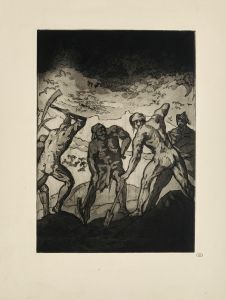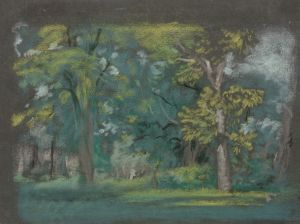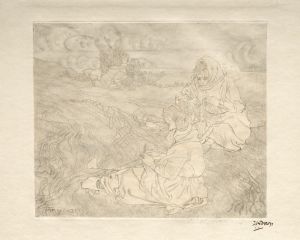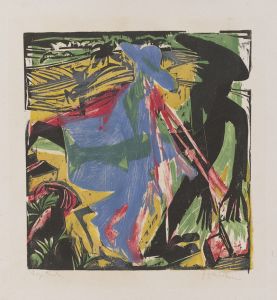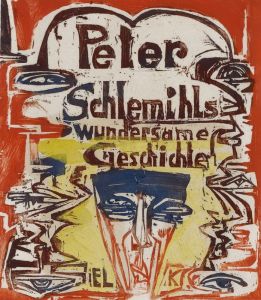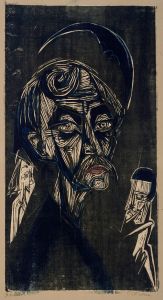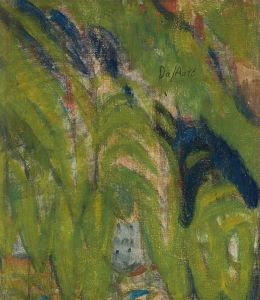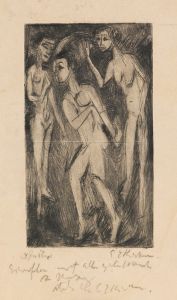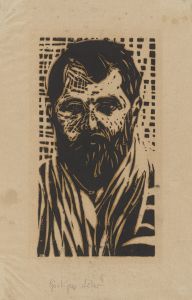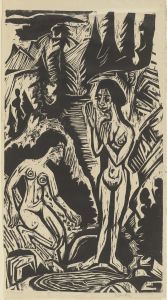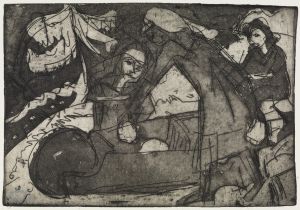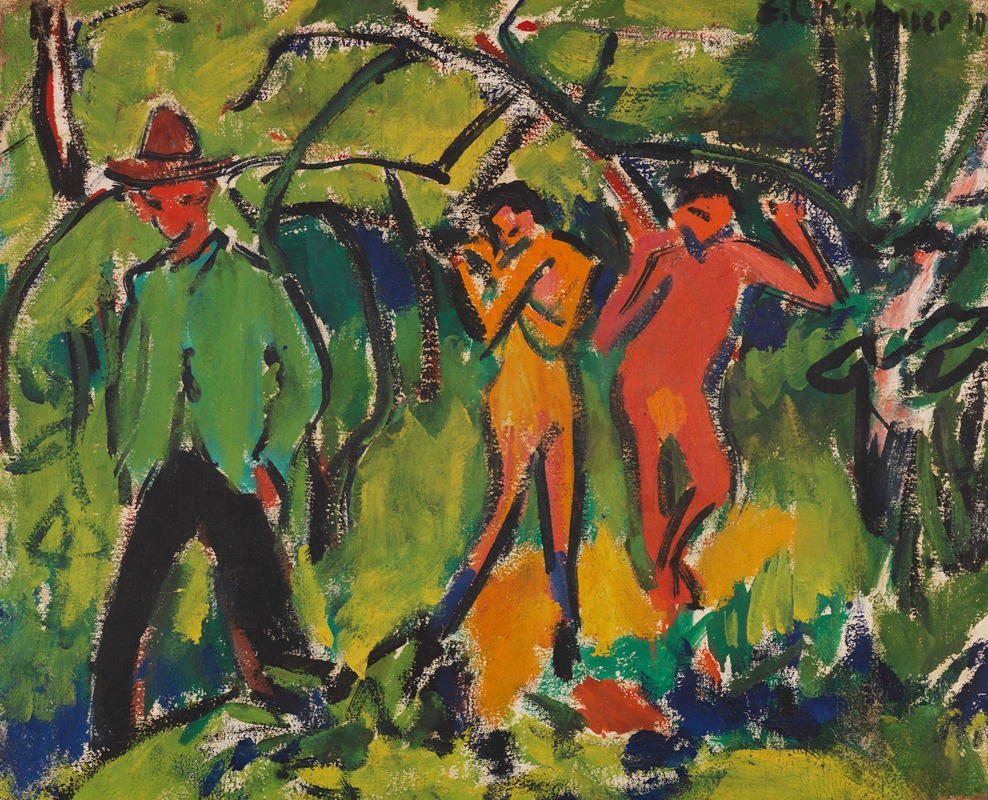
Im Wald
A hand-painted replica of Ernst Ludwig Kirchner’s masterpiece Im Wald, meticulously crafted by professional artists to capture the true essence of the original. Each piece is created with museum-quality canvas and rare mineral pigments, carefully painted by experienced artists with delicate brushstrokes and rich, layered colors to perfectly recreate the texture of the original artwork. Unlike machine-printed reproductions, this hand-painted version brings the painting to life, infused with the artist’s emotions and skill in every stroke. Whether for personal collection or home decoration, it instantly elevates the artistic atmosphere of any space.
Ernst Ludwig Kirchner's painting Im Wald (translated as In the Forest) is a work by the German Expressionist artist, who was a founding member of the influential art movement Die Brücke (The Bridge). Kirchner, known for his vivid use of color and dynamic compositions, often depicted scenes of nature, urban life, and human figures in his work. Im Wald reflects his interest in capturing the emotional and spiritual essence of the natural world, a theme that was central to the Expressionist movement.
The painting is believed to have been created during Kirchner's time in Germany, likely before his move to Switzerland in 1917. During this period, Kirchner frequently explored themes of nature and the forest, which he saw as a refuge from the industrialization and urbanization of modern life. His works often feature bold, angular forms and a heightened color palette, characteristics that are evident in Im Wald. The painting portrays a dense forest scene, with trees rendered in exaggerated, almost abstract forms. The composition conveys a sense of movement and vitality, emphasizing the emotional impact of the natural environment rather than a realistic depiction.
Kirchner's artistic style was heavily influenced by non-Western art, particularly African and Oceanic art, as well as the works of Post-Impressionist artists like Vincent van Gogh and Paul Gauguin. These influences are reflected in his use of simplified forms and expressive colors in Im Wald. The painting exemplifies Kirchner's ability to merge these inspirations with his own unique vision, creating a work that is both innovative and deeply personal.
The exact location of Im Wald within Kirchner's body of work is not definitively documented, and specific details about its creation, such as the year it was painted or its current whereabouts, are not widely available. However, the painting is representative of Kirchner's broader exploration of the forest as a motif, which he revisited throughout his career. For Kirchner, the forest symbolized a connection to primal, unspoiled nature, contrasting with the alienation he felt in modern urban environments.
Ernst Ludwig Kirchner's contributions to modern art have been widely recognized, and his works, including Im Wald, continue to be celebrated for their emotional intensity and innovative approach to form and color. While specific information about this painting may be limited, it remains an important example of Kirchner's engagement with the themes and techniques that defined his career.





